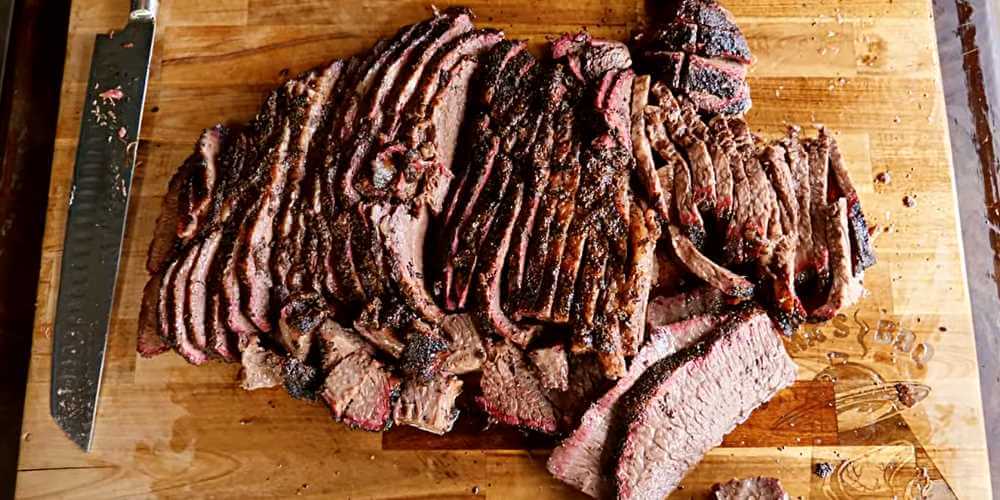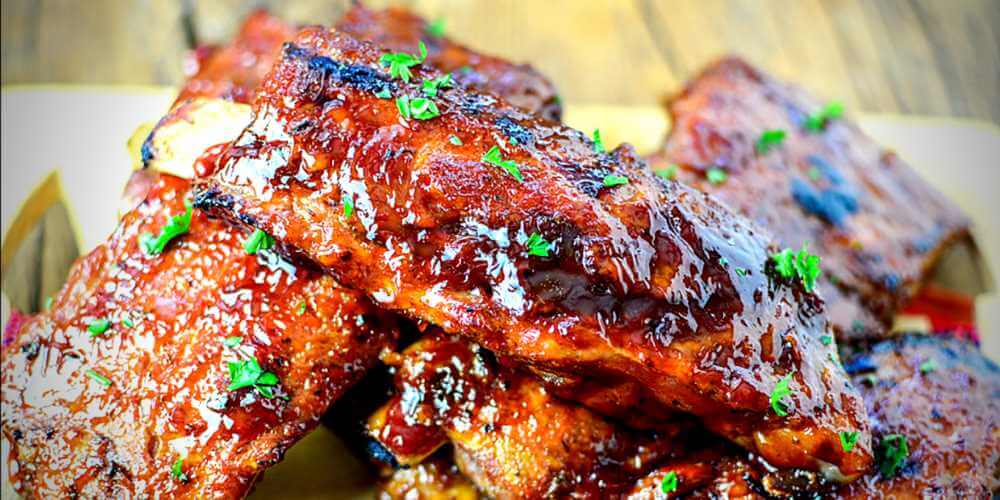BBQ 101: The Ultimate Meat Smoking Guide
The smell of smoke from a campfire is familiar to most of us. Consider how that aroma would be absorbed into the softest, most juicy piece of steak you have ever eaten. It is what you get when you smoke a piece of beef. By the end of this article, you’ll know everything there is to know about barbecue as it relates to smoking.
Step 1: Obtain the necessary equipment.
Smoking Devices
Here are the top six smoking accessories you will need.
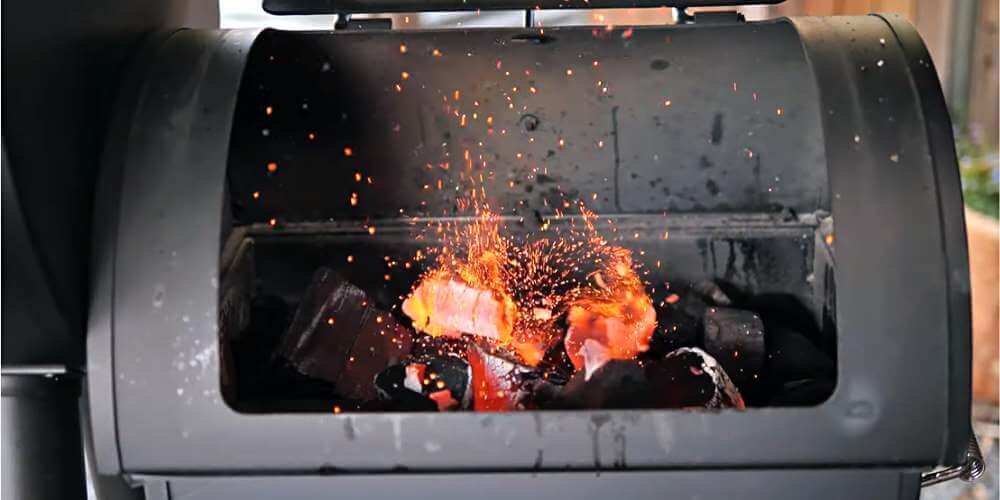
Smoker
The majority of manufacturers classify smokers based on how they create heat.
Wood
Hardwoods are the best for smoking. Do some research on the best sort and size of wood to use with your smoker.
Thermometers
You may invest in high-quality thermometers to monitor the temperature of the meat and smoke.
Water Pan
Water pans helps in the absorption of the smoke, and prevents the meat from drying out.
Spray Bottle
You will need to use a spray bottle to keep them moist throughout each cooking session. The biggest spray bottles are those with adjustable nozzles. You should release an equal amount of mist and stream. A pure mist dissipates before it reaches the meat, but a pure stream may dampen the wood.
Drip Pan
If your smoker does not come with one, you will need to install a large, shallow pan beneath as the meat releases grease and rendered fat. If left unchecked, these drippings can develop rancidly or spark fires.
Best Types of Smoker
Your space, your fuel usage, the effort, and your budget will all influence which sort of smoker you buy. These are the several types of commercial BBQ smokers available for making great low n slow meat.

Commercial Indoor Smokers
Commercial indoor smokers may be required in BBQ restaurants with limited space and high traffic. Full, half and under-counter cabinet configurations are available to accommodate a wide range of menu and space needs.
Indirect-heat Smokers
Indirect-heat Smokers – Also known as offset smokers, these devices have enclosed chambers that draw smoke, heat, and air from a firebox. This method slowly and evenly cooks the meat, imparting a smoky flavor. In their fireboxes, pitmasters use woods that complement their meat.
Smoker Grills
Wood-fired pellet grills are available in shapes and sizes, and they impart a woody flavor to grilled foods. Instead of turning vegetables to ash, smoker grills add a smoky flavor without overcooking them. These are ideal for restaurants that want to try smoking, special menu preparation, or outside catering.
Subterranean Pits
Subterranean pits are underground pits that trap food and cook it uniformly while infusing it with smoky characteristics utilizing an indirect heat source. The first kind of grilling was done in subterranean pits known as Pachamanca, which date back to the Inca Empire. Despite being extremely uncommon, some old-school pitmasters still employ subterranean pits.
Gas Smokers
These are designed like cupboards and heat using natural gas or propane.
Pellet Smokers
These are the most popular types of smokers in 2021. Compressed sawdust is used as the heat source, which is ignited by a heating rod and regulated by electric fans and grills. Modern pellet smokers use cutting-edge technology to regulate the process, allowing you to take a more hands-off approach to cooking and saving time.
Electric Smokers
An electric smoker is a good choice as it utilizes a heating element to firewood chips and produces smoke.
10 Favourite Smokers Available In Australia
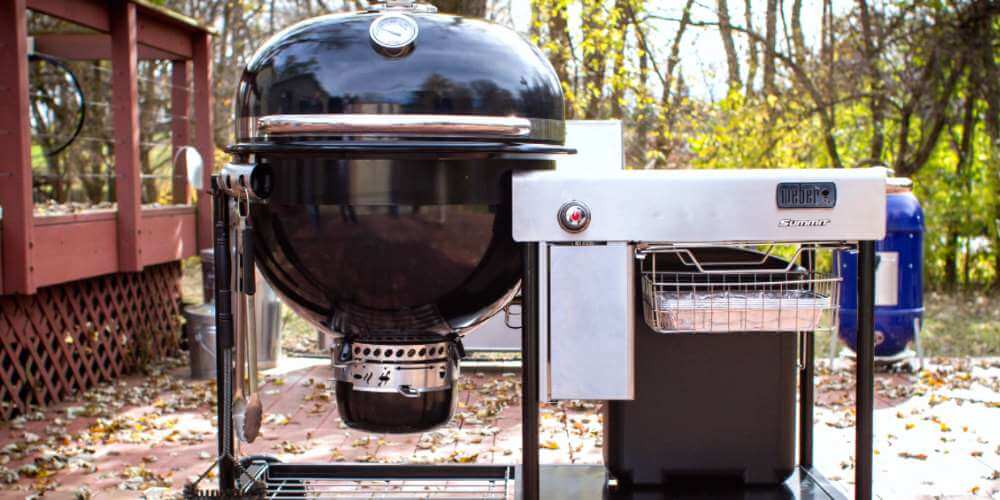
Traeger PRO 575
The Traeger PRO 575 is the best-selling WiFi-controlled pellet grill with a large cooking chamber’s capacity (575-inches).
450A Wood Pellet Smoker Grill by Z Grills
This Australian firm, Z Grills, is one of your best bets if you are searching for a wood pellet smoker grill for around $1,000. The Z Grills 450A is the brand’s smallest pellet smoker. It undoubtedly represents some of the greatest value on the local market, with a 7kg pellet hopper and an upgraded PID controller to keep the temperature steady.
30′′ Yoder Frontiersman
Yoder has risen to the top of the smoker field in recent years. They established themselves as one of the most trustworthy names in the industry with their high-end powerful signature 30-inch Yoder Frontiersman Wood Smoker mounted on a dedicated competition cart.
30-inch Masterbuilt Electric Smoker
Choose the Masterbuilt Electric Smoker if you still want something a little easier to handle for both beginners and pitmasters. This 30-inch workhorse has four chrome-coated smoking racks that provide 711 square inches of the smoking room.
Summit Charcoal Grill by Weber
The Weber Summit is a high-end charcoal smoker that performs a terrific job smoking, searing, and baking. It is a versatile improvement for the classic Weber Kettle.
Longhorn Combo Charcoal Gas/Smoker & Grill by Oklahoma Joe's
The Longhorn Combo from Oklahoma Joe is a one-stop-shop for Australians, with distinct cooking chambers for gas grilling, charcoal grilling, and smoking. It has 4,839 square centimetres of primary cooking space and 2,000 square centimetres of secondary cooking space, with a total capacity of one tonne, allowing you to prepare an entire feast with no bother and effort. Plus, because it is available at Bunnings, The Longhorn is one of Australia’s most accessible smokers – and owning a Bunnings smoker is a badge of honor in and of itself.
30′′ Horizon RD Special Marshal Smoker
Horizon BBQ smokers are made in Oklahoma, which implies some high standards coming from the purported home of BBQ. With a 60-inch long Cooking Chamber and a 30-inch long offset Firebox, as well as a heavy-duty charcoal gate that is designed to last, the Horizon RD Special Marshal Smoker is the greatest pick of the brand.
Hickory Pit Offset Smoker by Hark
The Hark Hickory Pit Offset Smoker is one of the more economical options, but it is still a dependable pit smoker for anyone to cook low-and-slow classics like brisket and pulled-back ribs.
36" Lang Patio Smoker
When it comes to firms that produce and develop the best BBQ smokers, Lang is one of the most trusted brands in the industry. It is a hybrid smoker and grill and one of the greatest flow smokers you will find on the market, like a handful of the other units on this top BBQ smokers list.
M1 M Grills
M Grills is a popular choice among competitors. If you are looking for one of their amazing patio BBQ smokers, go for the M1, which is a tiny reverse airflow smoker built for when grilling.
STEP 2: Choosing Meat Smoking Wood
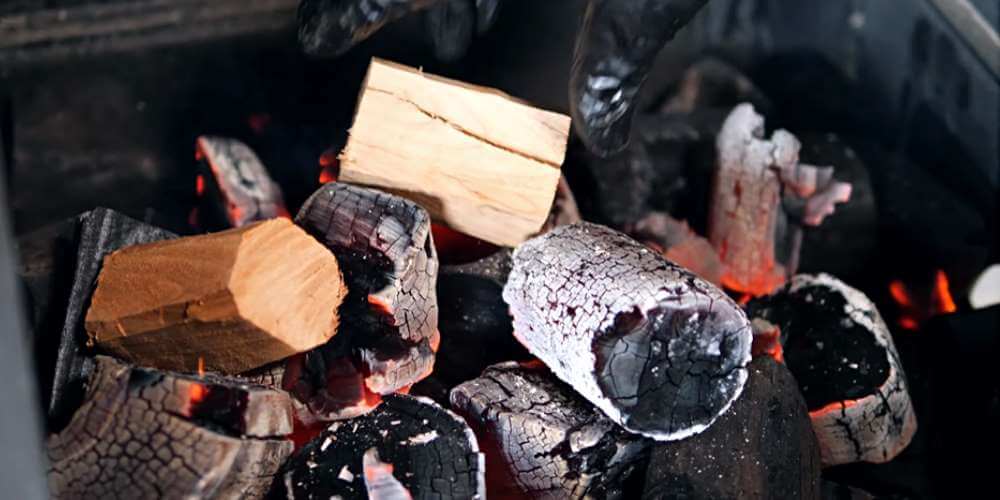
The flavor of grilled meats is influenced by wood smoke. The four greatest kinds of wood for smoking are listed below.
Hickory Wood
If you only have room for one type of wood, go with hickory. Hickory has been dubbed the Universal Wood for smoking the meat by BBQ specialists. Hickory wood has a natural sweetness and produces a lot of smoke, making it the ideal sweet-savory combination. Large chunks of ribs, chicken, red meat, and pig shoulders all benefit from it.
Mesquite Wood
Mesquite is a solid, hot-burning wood that has a rich, earthy flavor. Because the wood’s strong flavor complements red meat, it is the go-to wood for beef-centric Texas barbecue.
Apple Wood
If you want your smoked meat to have a sweet and fruity flavor, use applewood. Applewood has a mild flavor that takes time to develop, making it ideal for slow cooking. Pork, chicken, ribs, and wildfowl all benefit from it.
OakWood
It is used alone or in combination with other woods including cherry, hickory, and apple. Oakwood is frequently used by pitmasters to smoke brisket, beef, and sausages, making it a popular choice for Texas-style barbecue.
STEP 3: Selecting Meat Cuts
There are a few basic principles to follow when selecting the appropriate meat for grilling.
What kind of meat to smoke is a question of personal preference. Smoking has become popular for tough cuts of meat that do not cook well any other way, such as brisket, which is difficult to eat unless cooked slowly at a low temperature. Make sure it is from a reputable source. The best cuts of meat for smoking are high in fat and connective tissue (collagen). When the connective tissues are allowed to gently degrade, they convert to sugar and moisten the meat while it cooks. Smoked meats are an excellent example of the Mailliard reaction’s ability to increase the complexity of food. Heat causes the amino acids (proteins) in meat to react with the reducing sugars resulting in the new molecule’s formulation. It is similar to caramelization, which occurs when sugar is heated on the stove. To achieve the best piece of barbeque, the Maillard Reaction is crucial. The water in the meat must be present to break down the water-soluble ingredients in the rub, but it must also dry out before turning into the bark.
The best meats to smoke are listed here, so you will know what to ask for when ordering from an online butcher Melbourne site or when you visit your local butcher shop.

Boston Butt
Boston Butt (also known as Pork butt) is made from the thick, marbled upper section of a pig’s shoulder. It starts beneath the pig’s neck and usually includes a tiny bit of the pig’s shoulder blade. Boston Butt easily comes apart, making it an excellent choice for pulled pork recipes.
Picnic Cut
Picnic Cut (also known as Picnic shoulder) is a pig shoulder meat that has been well-exercised. This arm roast starts where the Boston butt finishes and extends down the leg to the hock.
Brisket
Brisket is a type of beef that comes from a cow’s breast. Cattle, which lack collarbones, rely on their pectoral muscles to lift the front part of their 12,000–1400 pound bodies off the ground. The meat of their breasts is substantial, rough, and full of connective tissue.
Spareribs
Spareribs are the long pieces of meat that run from a pig’s stomach to its shoulder. A rack of spareribs will have 11 to 13 bones, with flesh on both sides of the bones.
St. Louis-style ribs
St. Louis-style ribs are distinguished by their rectangular shape. They remove the breastbone, cartilage, and tips after that.
Pork Country-Style Ribs
Pork Country-Style Ribs are the leanest cut of pork ribs from the shoulder blade end of the loin with the most flesh per bone.
Plate Short Ribs
Plate Short Ribs come from the short plate, which is the lower section of a cow’s rib cage. The small plate goes between the 6th and 10th ribs, sandwiched between the brisket and flank steak cuts. Plate short ribs, sometimes known as “brisket on a stick, have 2″ of meat on top and span 12”. The low and slow cooking approach works nicely with this fatty cut of ribs.
Chuck Short Ribs
Chuck Short Ribs come from the front of the steer, just below the chuck. They run from the first to the sixth rib and are shorter than plate short ribs.
STEP 4: Meat Preparation
Depending on the cut of meat, there are a few things you should do to prepare it before putting it on the smoker. Do trimming. If you are just getting started, eliminating the fat pad will make things easier and give you a nicer bark. In any case, you are not going to eat the fat. You can experiment with leaving it on as you acquire more experience to determine what you prefer. Go ahead and cut that fat pad down as much as you can.

Seasonings
To many individuals, properly seasoning meat can imply a variety of things. Salt is the one substance on which everyone can agree. Salt accomplishes three goals: it permeates the flesh, aids tenderization, makes it simpler to chew and more enjoyable to consume, and brings out the flavor. It also helps liquid travel deeper into the meat and stay there throughout cooking, preventing it from drying out too rapidly. When selecting how much salt to use, a decent rule of thumb is to use around 1/2 teaspoon of kosher salt per pound or 1/4 teaspoon of table salt per pound. Salt helps boost taste bud usage by suppressing bitter flavors, enhancing sweetness, and suppressing bitter flavors. Pepper is the most important condiment after salt. Pepper provides a little heat to the mix, which helps to balance out the salt and gives the dish a well-rounded flavor profile.
Dry Rubs
The herbs and spices in dry rubs, unlike salt, do not permeate the flesh and remain only on the surface. They only need to be applied for a few minutes before the meat is placed on the smoker as a result. Rubs are produced with only a few components because the goal is to impart flavor without overwhelming the meat. A good rub’s base ingredients are usually salt, sugar, pepper, garlic, and onion. From here, you can add whatever spices or herbs you choose to create your distinct flavor. Dry rubs are used in a variety of regional barbecue cuisines. Many dry rubs also incorporate sugar, which adds sweetness and aids in the caramelization of the meat.
Sauces
Few things elicit as many strong emotions among barbecue lovers as the sauce being slathered on. There is a lot of sauce to try out there, and if you wish to experiment, it is not hard to come up with your own – whether tomato or vinegar-based.
STEP 5: Starting a fire
Meat can be cooked in two ways: over direct heat or indirect heat. Grilling those delectable burgers over direct fire is the way to go. However, you’ll be using indirect heat to smoke. The foundation of smoking is indirect heat. To put it another way, you’re not cooking the meat directly over the flame or heat source; it’s too hot and difficult to regulate. Instead, you’re allowing the flame’s heat and smoke to drift over the meat while keeping it out of the way. Cooking with indirect heat is straightforward when you use a dedicated smoker. A smoker is structured in that it keeps the meat out of direct heat while still allowing smoke to reach and absorb it. An excellent smoker is built to ensure that smoke and heat circulate evenly around the meat for a consistent cook.
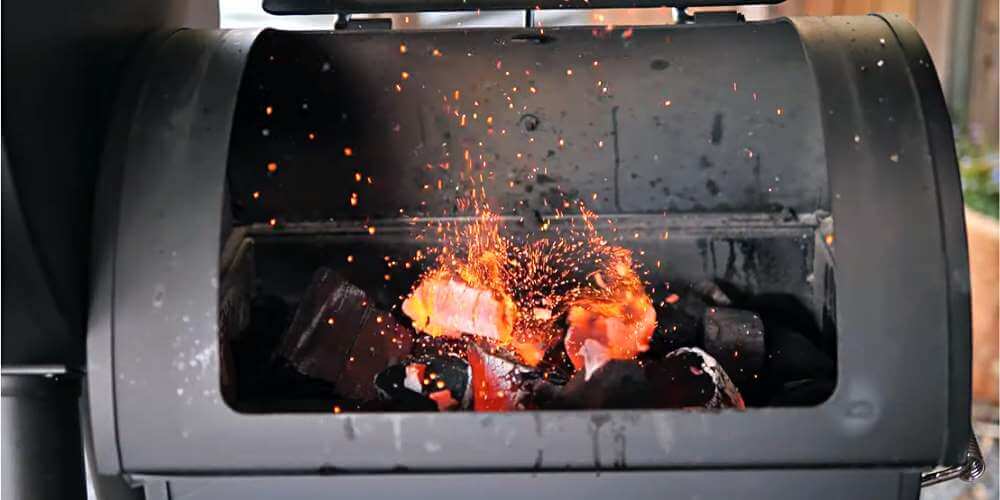
Calculating Cooking Time
You must consider three criteria when determining how long to smoke your meat: the type of meat, the thickness of the flesh, and the temperature of the smoker. You’ll need 6 to 8 hours on average, but brisket can take up to 22 hours. Some cooks use the “3-2-1 rule” while smoking the meat: the meat is left to smoke for 3 hours, then wrapped in aluminum foil for the next 2 hours to ensure adequate cooking of the interior. The foil is removed for the final hour of cooking to allow the outside of the meat to crisp up.
If you cook the meat properly, you’ll notice a pink ring around the meat just within the dark outer layer (which is the nitric acid).
Smoking on a Charcoal Grill
You will need to employ a 2-zone configuration, which divides the grill into a hot (direct heat) zone for browning and searing, and an indirect zone for smoking and slow-cooking. It’s straightforward to set up a two-zone configuration. Simply pile all charcoal on one side of the grill, leaving the other side empty, and light the grill. The side with the coals will continue to burn hot as usual, allowing you to sear and brown the steaks. It’s on the other side that the real magic happens — for smoking.
The indirect heat, which is directed away from the coals, will not be hot enough for browning, but it will allow you to cook food at a lower temperature using convection. It is ideal for smoking slowly and steadily.
Controlling the size of the fire on the hot side will allow you to obtain the ideal temperature of 225oF to 275oF for maximum tenderness and juiciness. It will take some practice to figure out how much charcoal to use and how your smoker reacts to different weather conditions. However, with the help of a reliable meat thermometer, it’s more than achievable.
Smoking on a Gas Grill
It’s even easier to set up a two-zone barbecue on a gas grill. Simply turn on one side of the grill’s burners while leaving the others off. It will take some trial and error, just as with charcoal, to figure out which burners to turn on and how high to turn them up. However, after you’ve done that, adjusting the temperature and getting it to 225oF is simple. Placing a water pan on the grill can assist in maintaining a consistent temperature when doing 2-zone cooking. When the heat source spikes or drops suddenly, water absorbs the heat and then radiates it back out, which helps keep the overall grill temperature consistent. The added moisture from evaporating water can keep the meat moist and flavorful by preventing it from drying out.
Controlling Temperature
Smoking necessitates precise temperature control. Meat smoking works best at temperatures ranging from 200 to 220 degrees Fahrenheit. Most meats should be cooked to an internal temperature of 145 degrees Fahrenheit and poultry to 165 degrees Fahrenheit. Smoking is essentially a long process of overcooking tough meats to produce a tender and flavorful meal. It is best to have two accurate thermometers for the meat’s internal temperature and smoker’s temperature.
STEP 6: Sustaining the Smoke
Another fundamental smoking rule is to position the meat in the smoker so that it is surrounded by smoke. You want a thick stream of smoke surrounding the meat at all times to give it the exposure it needs to enhance the flavor. The smoke must be moving to prevent creosote buildup from turning the meat bitter.
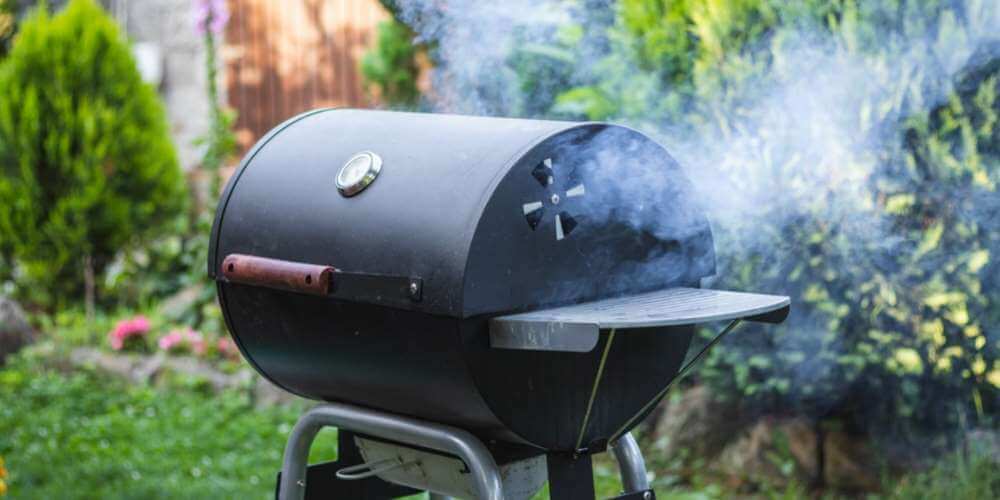
STEP 7: Maintaining the Moisture and Improving Ventilation
In addition to ensuring that your smoker is smoking, you should also ensure that it is steaming. Keeping the water pan full, which is provided to most smokers, is an important part of the smoking process. If you have a large smoker, you will most likely have to refill the water pan several times while smoking. Adding a marinade before cooking or a sauce while the meat is smoking will help keep it moist, but this is entirely optional.
Keep your grill’s ventilation system open, especially if you’re using a charcoal smoker. The ventilators allow free flow of air, resulting in clean smoke that improves the flavor of the meat. The oxygen control on most smokers and grills is the intake damper, followed by the exhaust damper. The intake damper is typically found near the wood or charcoal, and its primary function is to increase the flow of oxygen into the smoker. The chimney, on the other hand, is the damper. Check that the vents are working properly for optimal smoking results. The meat smoking process is simple, though it may be a little technical for beginners. If you are a beginner and want to get the best meat smoking results, follow the tips above and remember to use a thermometer to measure the temperature of the meat while cooking.
BBQ Smoking Tips
Once you have gathered everything you will need to smoke your meat, here are some tried-and-true tips to help you create premium barbecue.
- Make a BBQ schedule and practice your setup. Long cooking times cause forgetfulness and exhaustion. Follow a detailed schedule that outlines when to increase heat, wrap meat, and factor in meat rest times to ensure your meat is ready when you need it and that you do not miss any important steps along the way.
- Open your cooking chamber as little as possible. The lid keeps the smoke inside and ensures that your meat cooks properly.
- The best flavor comes from light blue smoke.
- For a more even cooking process when smoking an uneven cut of meat, use trussing.
- Use only dry wood.
Conclusion
There are several factors to consider when smoking meat. Everything from the style and type of wood used, to the quality and size of the fresh produce, to the temperatures all impact your finished goods. Take your time and experiment with pieces of equipment, products, and techniques until you achieve perfection. It all comes down to patience and time.

